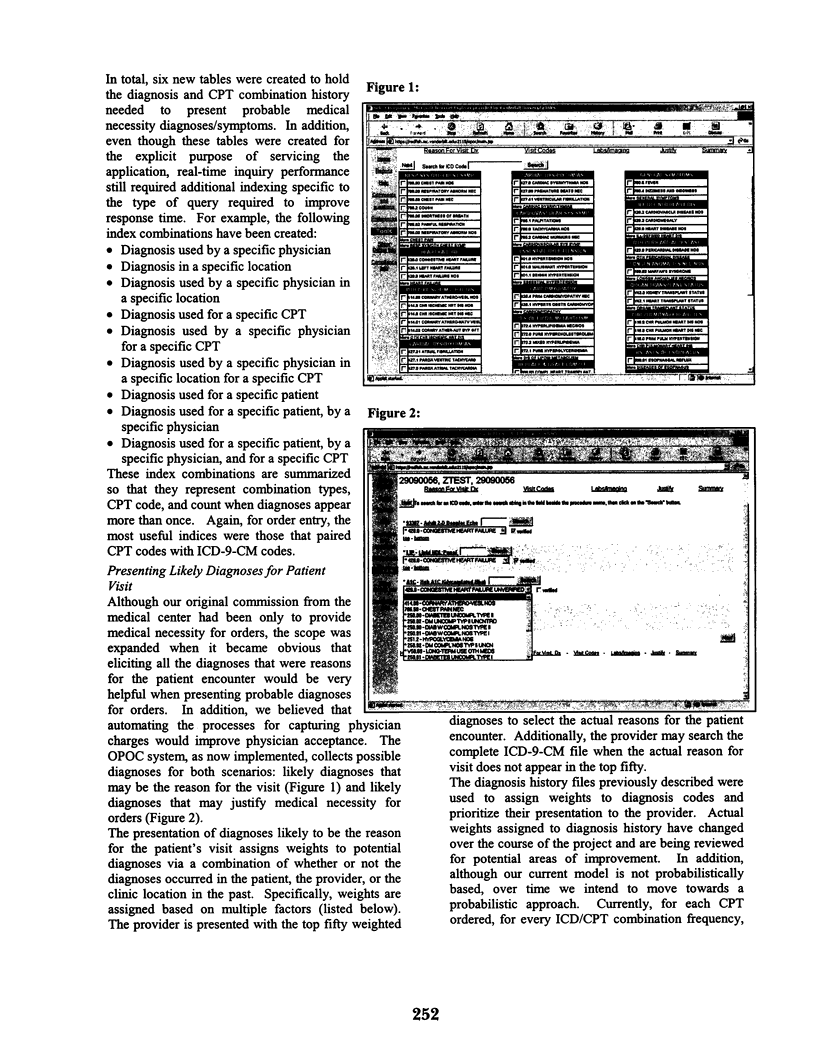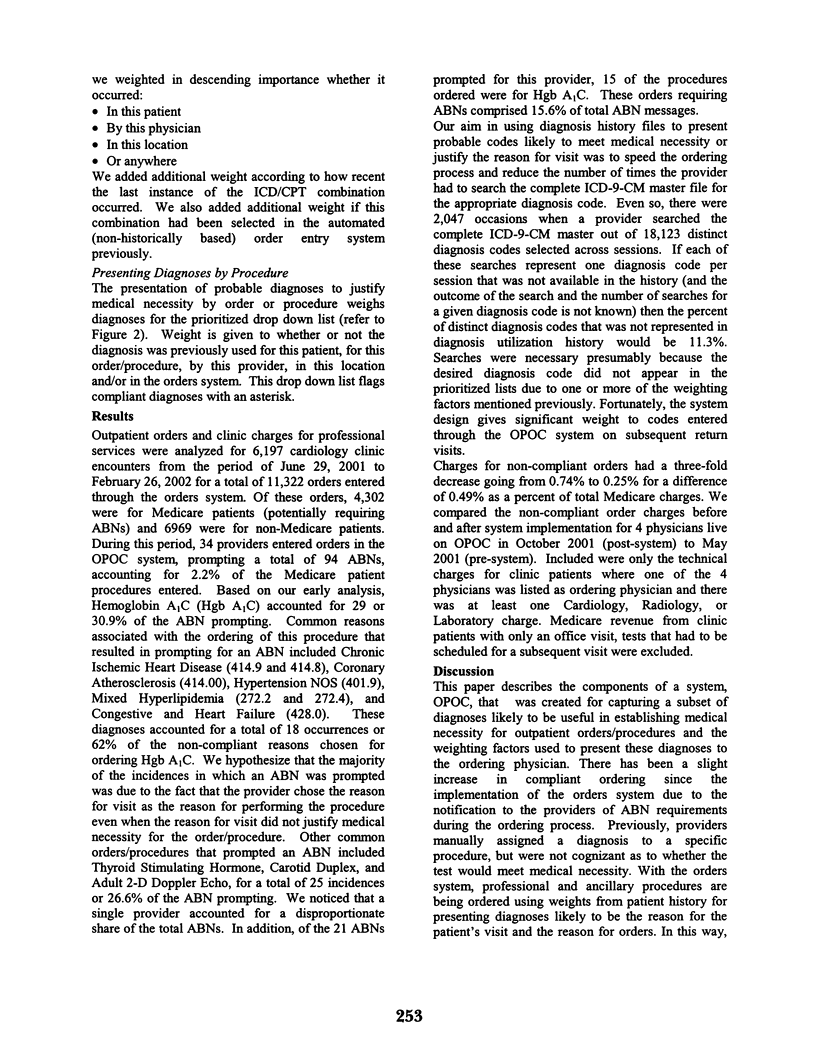Abstract
Physician order entry is difficult to implement, both in inpatient and outpatient settings. Such systems must integrate conveniently into clinical workflows, and provide sufficient benefit to offset the burden of system use. For outpatient order entry, significant advantages can accrue when systems incorporate medical necessity guidelines - improved billing and adherence to governmental policies. The authors developed and implemented an outpatient order entry system that utilizes an electronically accessible history of patient, provider, and clinic-related diagnoses in assisting providers (when possible and appropriate) to select compliant justifications for tests and procedures. The pilot implementation site, active for more than six months, has been the Vanderbilt University Page Campbell Cardiology Clinic, with 34 providers.
Full text
PDF




Selected References
These references are in PubMed. This may not be the complete list of references from this article.
- Lamers L. M. Risk-adjusted capitation based on the Diagnostic Cost Group Model: an empirical evaluation with health survey information. Health Serv Res. 1999 Feb;33(6):1727–1744. [PMC free article] [PubMed] [Google Scholar]
- Weiner J. P., Dobson A., Maxwell S. L., Coleman K., Starfield B., Anderson G. F. Risk-adjusted Medicare capitation rates using ambulatory and inpatient diagnoses. Health Care Financ Rev. 1996 Spring;17(3):77–99. [PMC free article] [PubMed] [Google Scholar]


